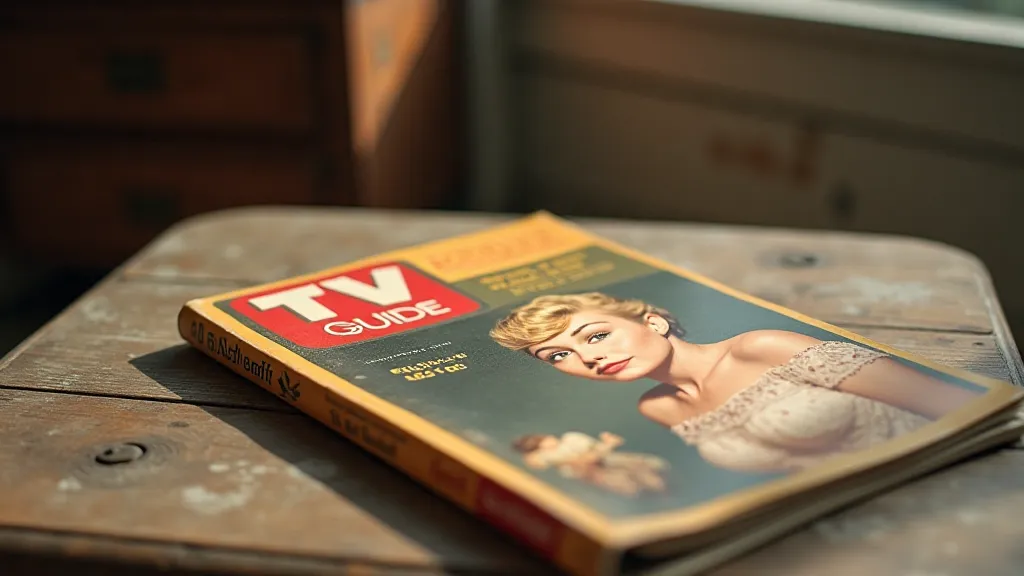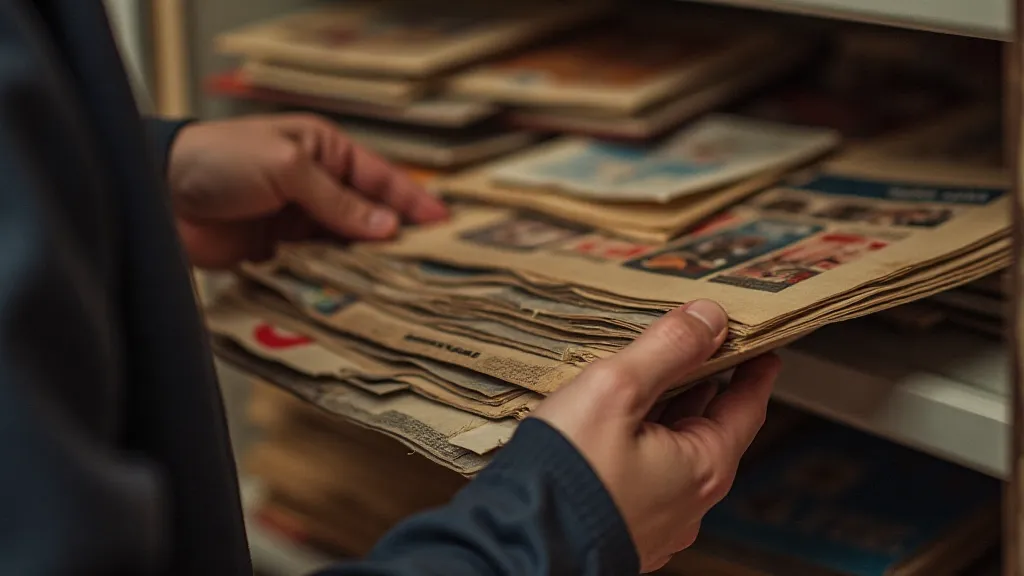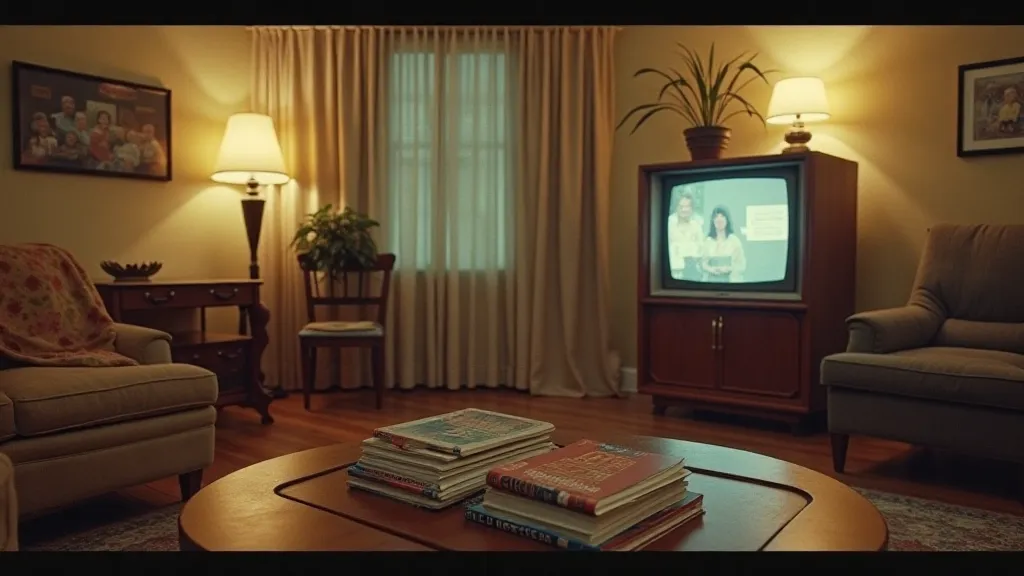The Static of Obsolescence: Why Fleeting Television Became a Collector’s Treasure
There’s a peculiar melancholy that clings to obsolete technology. It’s more than just sadness for something lost; it’s a profound sense of fragility. Think of a perfectly preserved antique accordion, its bellows still pliable, its keys capable of coaxing out a wistful melody. The craftsmanship is undeniable, the artistry palpable. Yet, its original purpose – entertainment, connection, perhaps even solace – was destined to fade, replaced by newer forms of diversion. Vintage TV Guides embody this same ephemeral quality, and understanding why they've become so cherished requires a glimpse into their original context and a contemplation of our changing relationship with media.
For generations, the TV Guide was a ubiquitous presence in American homes. Delivered weekly, often nestled within the morning newspaper, it was more than just a listing of programs. It was a ritual, a family conversation starter, and often a vital source of information in an era before the internet. These weren’t curated algorithms predicting our interests; they were blunt, honest snapshots of the television landscape. Families would pore over them, debating which shows to watch, discussing the actors, and planning their evenings around the broadcast schedule. The information was meant to be consumed, discarded, and replaced with the next week's edition. They were, by design, disposable.

The Dawn of Television and the Birth of the Guide
The TV Guide’s journey began in 1953, a time when television was still finding its footing. Early television broadcasts were regional, fragmented, and often experimental. The need for a centralized listing became immediately apparent. The first issue, initially called "Television Guide," was a national publication, a monumental undertaking considering the logistical challenges of the time. The initial design was straightforward, prioritizing clarity and comprehensiveness. The focus was purely functional: tell people what was on, and when. This stark simplicity contrasts sharply with the visually complex and heavily branded magazines of today. Think about the limited color palettes of the 1950s – the dominance of muted tones and carefully considered design choices that reflected a different aesthetic sensibility.
Beyond the Listings: A Window into a Lost World
The true value of collecting pre-1970s TV Guides extends far beyond the show listings themselves. They’re time capsules, offering unparalleled insights into the culture, advertising, and societal values of the era. The advertisements, for instance, are a goldmine of historical detail. They showcase the products that shaped American lives, the aspirations of the middle class, and the evolving notions of family and gender roles. A 1965 TV Guide might feature advertisements for Zenith televisions, highlighting their advanced features (remarkably basic by today's standards), alongside ads for canned goods and home appliances. These are visual records of a specific moment in consumer history. The shift in advertising strategies over the decades also reflects broader changes in American culture and consumer behavior; understanding those changes can be aided by considering how advertising in vintage TV Guides reflected American dreams.
The editorial content, too, offers glimpses into the concerns and anxieties of the time. Reviews of television programs reveal the critical lens through which audiences viewed entertainment. Articles exploring social issues provide context for understanding the broader cultural landscape. Even the cover selections – the stars chosen to grace the front page – reflect the entertainment hierarchy and the prevailing tastes of the moment. One might find insights into the choices and decisions of those who shaped the publications by looking deeper into the untold stories of the people behind the TV Guide.
Planned Obsolescence and Enduring Fascination
The concept of planned obsolescence is deeply intertwined with the story of the TV Guide. Manufacturers actively encouraged consumers to upgrade their televisions, radios, and other devices on a regular basis. This relentless cycle of replacement contributed to the ephemeral nature of many media artifacts. TV Guides, intended to be discarded after a single week, were just one facet of this larger consumer culture.
Yet, something remarkable has happened. Despite being designed for disposal, these seemingly insignificant paper artifacts have acquired immense value. Why? Perhaps it’s a reaction against the constant stream of new technology, a longing for a simpler time when entertainment was more deliberate and less overwhelming. Perhaps it’s the tactile appeal of a physical object, a connection to the past that digital media simply can’t replicate. Or perhaps it’s a profound appreciation for the craftsmanship – the typesetting, the printing, the careful design – that went into creating these weekly snapshots of American life. The faded inks, the slightly yellowed paper, the subtle imperfections… these are not flaws, but marks of authenticity, testaments to their age and history.

Identification, Rarity, and Preservation
For serious collectors, identifying and assessing the value of pre-1970s TV Guides can be a rewarding, albeit complex, undertaking. Regional editions, those specific to a particular city or state, are often more valuable than national editions. Certain dates are considered particularly rare, often due to significant news events or programming milestones. For example, an issue covering the Kennedy assassination or the first moon landing would command a premium.
Condition plays a crucial role in determining value. Issues in pristine condition, free from tears, stains, and creases, are highly sought after. While some collectors prefer mint-condition copies, others appreciate the character and patina that comes with age and wear. Preservation is key. Storing TV Guides in acid-free sleeves and boxes helps protect them from further deterioration. Direct sunlight and humidity should be avoided. The goal isn’t to artificially preserve them, but to stabilize their condition and prevent further damage. The evolution of design itself is an interesting subject to contemplate, especially when considering how the evolution of color and advertising in 1960s TV Guides transformed viewing experiences.
A Lasting Legacy
The pre-1970s TV Guide collection is more than just a hobby; it’s a preservation effort. It’s a way to connect with a lost era, to understand the cultural forces that shaped American society, and to appreciate the fleeting beauty of ephemeral media. The static of obsolescence has transformed into a resonant hum, a reminder of a time when television was a shared experience, and a TV Guide was a cherished companion. It’s a testament to the enduring human fascination with the past, and a celebration of the artistry and ingenuity that went into creating these unassuming, yet remarkably significant, artifacts of American culture. Examining the impact of these publications is fascinating, and one can glean even more insight into how TV Guide shaped national viewing habits.






